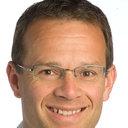Hypoxia enhances chondrogenic differentiation of human adipose tissue-derived stromal cells in scaffold-free and scaffold systems.
Keywords
Abstract
Human adipose-derived stromal cells (hASCs) possess the potential for chondrogenic differentiation. Recent studies imply that this differentiation process may be enhanced by culturing the cells in low oxygen tension in combination with three-dimensional (3D) scaffolds. We report the evaluation of the chondrogenic potential of hASC pellets in 5 and 21% O2 and as cell-scaffold constructs using a collagen I/III scaffold with chemical induction using TGF-β3. hASCs from four human donors were cultured both in a micromass pellet system and in 3D collagen I/III scaffolds in either 5 or 21% O2. Chondrogenesis was evaluated by quantitative gene expression analysis of aggrecan, SOX9, collagen I, II and X and histological evaluation with H&E and toluidine blue staining. Induced pellets cultured in 5% O2 showed increased peripheral cellularity and matrix deposition compared with 21% O2. Induced pellets cultured in 5% O2 had increased control-adjusted gene expression of aggrecan, SOX9 and collagen I and decreased collagen X compared with 21% O2 cultures. Induced pellets had higher gene expression of aggrecan, SOX9, collagen I, II and X and increased ratios of collagen II/I and collagen II/X compared with controls. As for pellets, scaffold cultures showed cellularity and matrix deposition organized in a zonal manner as a function of the oxygen tension, with a cartilage-like morphology and matrix deposition peripherally in the 5% O2 group and a more centrally located matrix in the 21% O2 group. There were no differences in histology and gene expressions between pellet and scaffold cultures. Five percent O2 in combination with chondrogenic culture medium stimulated chondrogenic differentiation of hASCs in vitro. We observed similar patterns of differentiation and matrix disposition in pellet and scaffold cultures.



